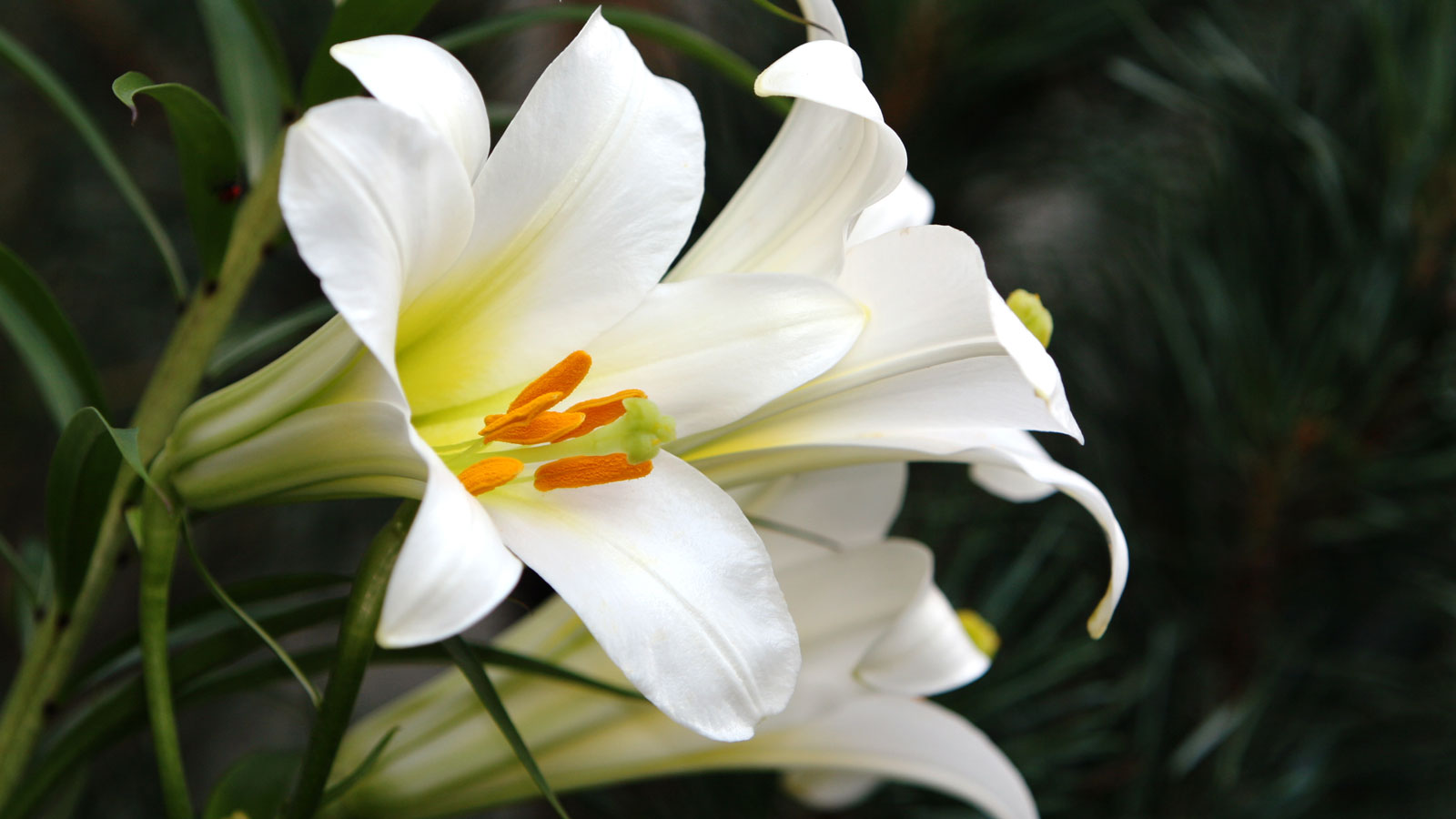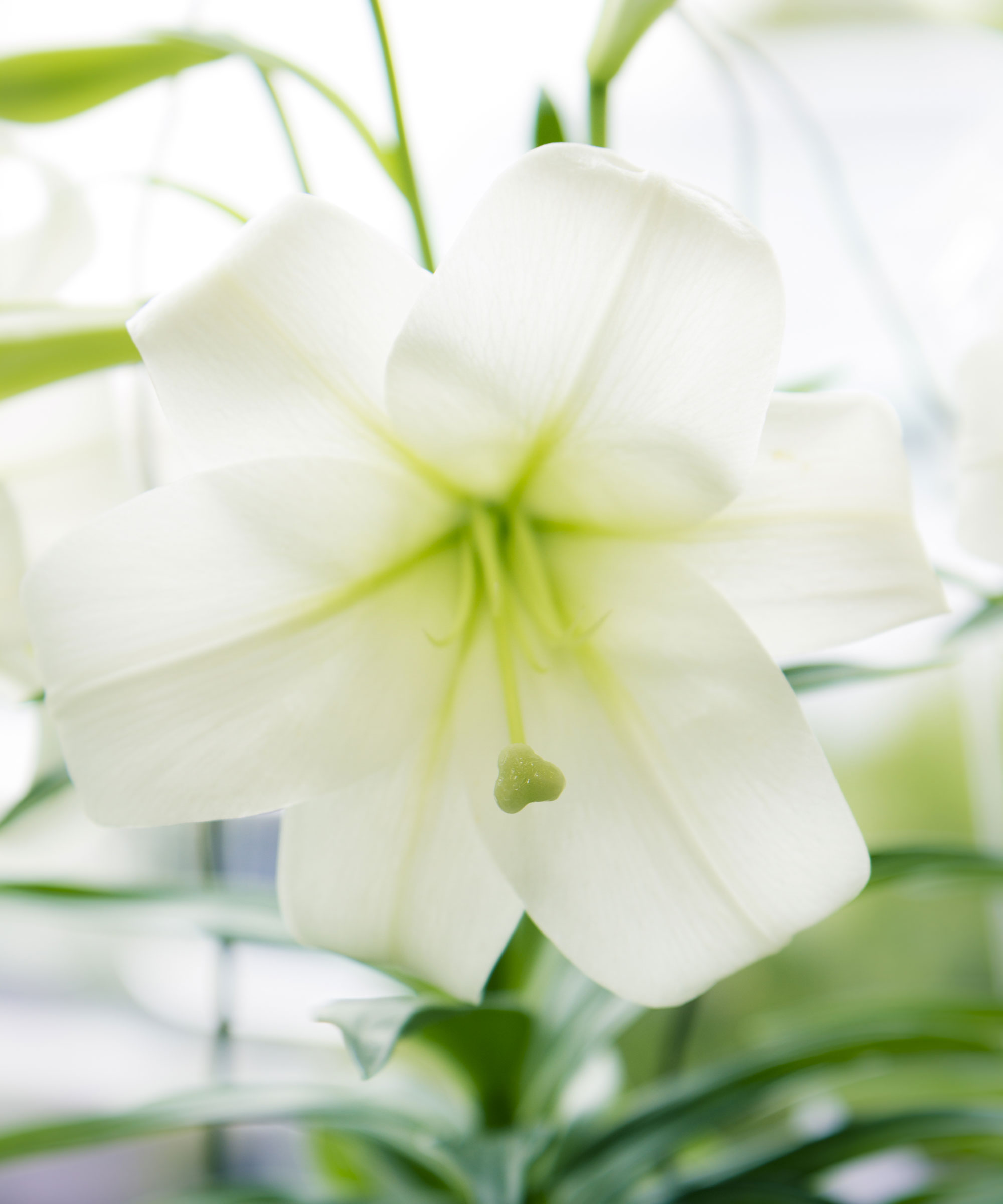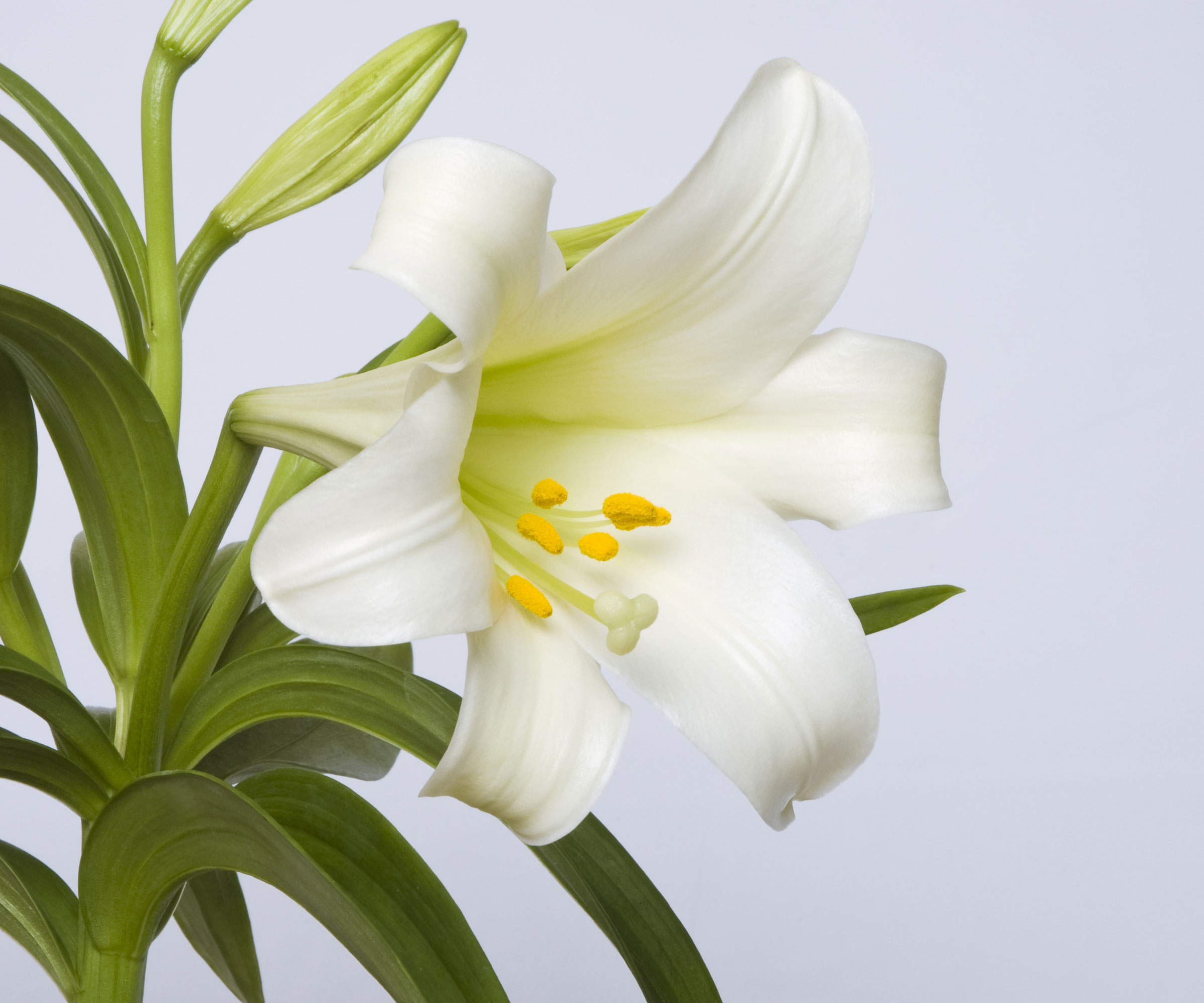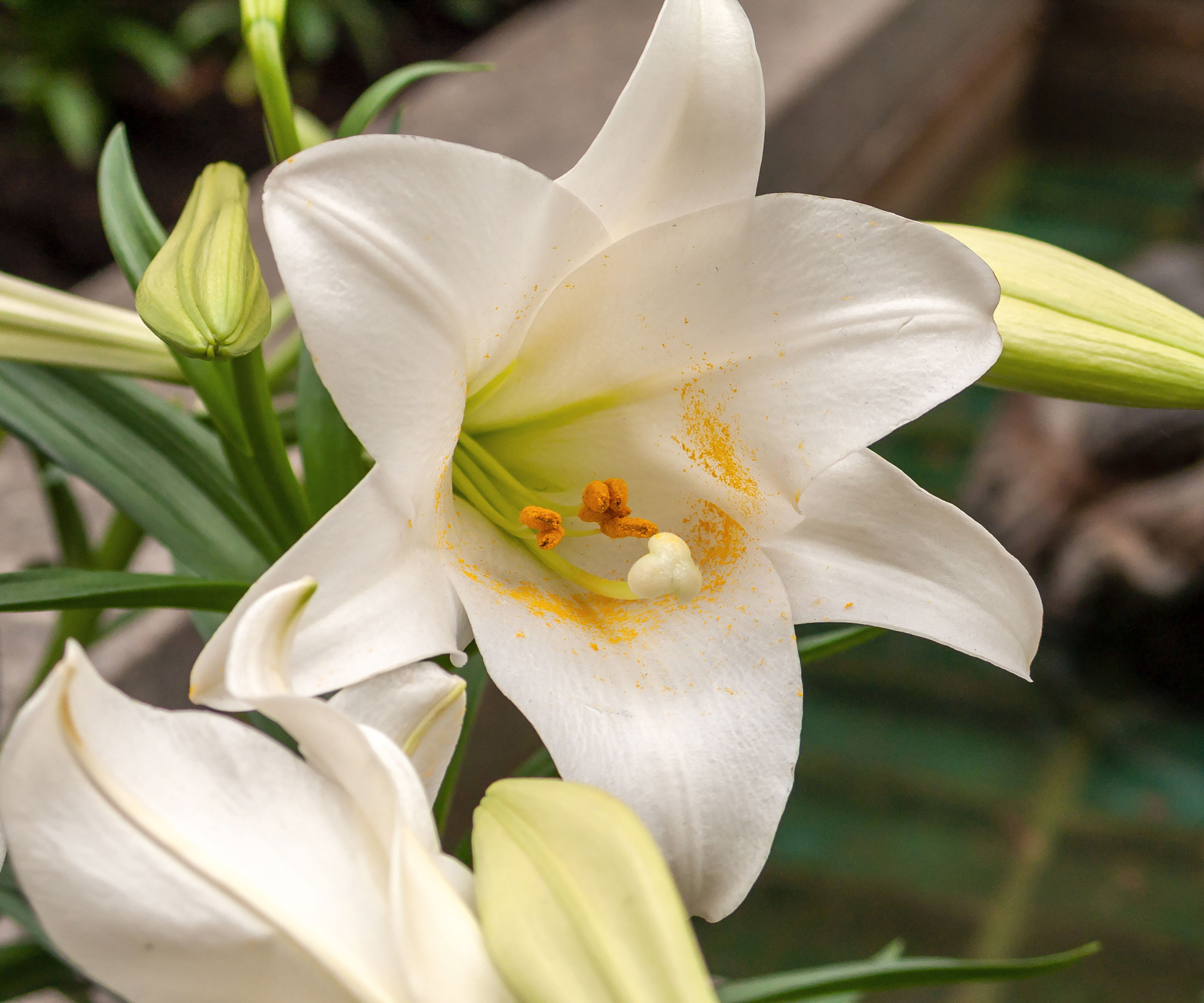Why is my Easter lily dying? 5 common causes, plus how to bring it back to life
Find out how to fix the problems with your Easter lily – and get your plant looking beautiful again


Now is the perfect time to add beautiful Easter lilies to your indoor plant collection or alternatively think about giving them as seasonal gifts. These beauties can be grown both indoors and out, and their luminous blooms make them one of the most sought-after flowers of the season.
They are relatively easy plants to look after but nevertheless you will hit problems if you don't follow the right Easter lily care routine for them. In the very worst cases of plant parent negligence this could mean your Easter lily ends up dying.
If you have concerns take action now to fix things and bring your plant back to good health. There are several common reasons why your Easter lily might by dying so go through our checklist now to make sure you're caring for your plant in the right way.

Follow the right care routine for an Easter lily and keep your plant healthy and blooming

Sarah Wilson has been writing about gardens since 2015, covering everything from garden design to houseplant care. She has studied introductory garden and landscape design as well as floristry. When it comes to choosing indoor plants for spring, she's a big fan of Easter lilies but acknowledges they can be tricky if you don't care for them in the right way.
5 reasons why your Easter lily might be dying
Most of the reasons why your Easter lily might be dying are pretty straightforward and easy to fix, so you can soon get your plant back on track and once again the stunning centerpiece of your spring garden.
With proper care, potted Easter lilies flower for a couple of weeks after purchase, with each flower lasting 2-3 days. Remember that your plant may simply be nearing the end of its life cycle after it has bloomed and is now beginning to die back accordingly. If you think this is the case simply transfer the bulb to the garden where it will bloom again next year as part of your spring bulbs display.
1. You are overwatering your plant
Easter lily flowers hate sitting in water, so be careful how much you water them. Keep the soil damp but not sodden. An easy way to check this is to push a finger down into the compost and if it feels waterlogged you need to cut back on how much you're watering.
'Your Easter lily may be dying due to root rot brought on by overwatering,' says gardening expert Aaditya Bhatta, founder of Plantscraze. 'Keep the plant from sitting in standing water, and ensure the soil is well-draining.'
Design expertise in your inbox – from inspiring decorating ideas and beautiful celebrity homes to practical gardening advice and shopping round-ups.
2. You are underwatering your plant
On the other hand, if you haven't been watering as often as needed, your plant could be experiencing dehydration and wilting due to lack of moisture in the soil. This could very likely be the reason why your Easter lily is drooping, or worse dying.
If the soil around an Easter lily dries out, it can affect the flowering process as this plant prefers moist soil at all times. Push your finger into the soil to test how dry it is. If the soil is caked and compact, then your plant definitely needs watering.
'To prevent further damage, make sure that water can properly drain out of the pot so it doesn't sit in water, and adjust your watering schedule accordingly to provide enough moisture for your Easter lily without overwatering,' says Lindsey Hyland, gardening expert and the founder of Urban Organic Yield.

Healthy Easter lily plants need a regular watering routine
3. Your Easter lily is in the wrong location
Easter lilies like a bright spot but out of direct sunlight, so position them near a window. Temperatures around 65-75˚F are ideal. 'Consider moving the plant to a cooler place or providing some shade from direct sunlight if their current location doesn't match these requirements,' suggests Richa Kedia of Simplify Plants.
At the same time factor in your plant's sunlight requirements. 'Lack of sunlight has adverse effects on the growth of your Easter lily,' says plant expert Robert Silver, CEO of progardeningblog.com. 'They should be placed in a location where they receive 6-8 hours of sunlight per day.'
Younger plants may need less sunlight, while larger, more established, plants may require more light to support their growth. One thing's for sure – if your lily is not getting enough light, it will become weak, lose its leaves and eventually die.
4. Your plant is being affected by pests or disease
Easter lilies can be troubled by a range of common houseplant pests and diseases including aphid infestation so if you see anything that causes concern make sure you read up to find out how to deal with it. As well as leaf discoloration and marking, pests and disease can also result in a plant that looks like it's dying.
'Easter lilies can be susceptible to pests such as aphids or diseases like botrytis, the grey mold fungus,' says landscaping expert Brandon Sierra of VRDigs. 'Make sure to inspect your plant regularly for signs of pests or disease and take appropriate action if needed.'

Check over your Easter lily plant regularly even if it looks fine and healthy. That way you can nip any potential pest or disease problems in the bud by spotting them early
5. You aren't feeding your plant correctly
Easter lilies require regular fertilization to flower, so if the plant is not receiving enough nutrients, it may be the reason why your Easter lily isn't blooming. 'To ensure the health of your Easter lily, make sure you provide it with the proper amount of nutrients as indicated,' says Brandon Sierra.
Make sure you don't over-fertilize though, as this is one of the most common indoor plant mistakes. 'Too much fertilizer can also harm your Easter lily, so make sure you follow the instructions on the label for how much to use,' says Lindsey Hyland. 'If these tips don't help, it may be necessary to repot your plant into fresh soil.'

Lifestyle journalist Sarah Wilson writes about garden design and landscaping trends for Homes & Gardens. She has studied introductory garden and landscape design, and also has an RHS Level 2 qualification in the Principles of Plant Growth and Development. She is a regular contributor to Homes & Gardens and Livingetc. She has also written for Country Living, Country Homes & Interiors, and Modern Gardens magazines